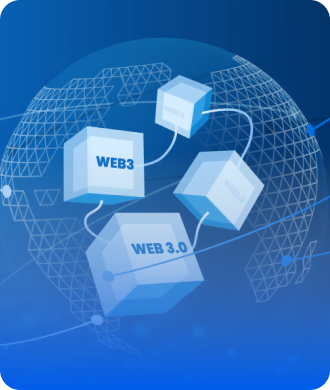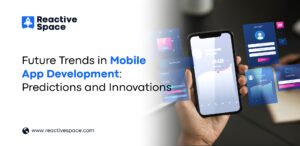
In the field of Artificial Intelligence (AI) and natural language processing (NLP), ChatGPT has emerged as a powerful tool that’s transforming text generation, conversations, and more. This blog will help you understand ChatGPT’s evolution, practical applications, and future possibilities in a clear, user-friendly manner that’s also optimized for search engines.
What is ChatGPT?
ChatGPT, developed by OpenAI, is an advanced language model using the Generative Pre-trained Transformer (GPT) framework. It uses deep learning to comprehend and create text that resembles human language based on provided prompts. This technology developed a major advancement in natural language processing (NLP) and has opened doors for many applications across different industries.
The Evolution of ChatGPT: From Origins to Advances
ChatGPT has evolved through various versions, each refining its abilities and expanding its potential:
GPT-3: Introduced in 2020, GPT-3 was a breakthrough in AI language models. It was massive in scale (175 billion parameters) and excelled in tasks like answering questions, writing essays, and even storytelling with impressive fluency.
GPT-4 and Beyond: Looking to the future, GPT-4 will bring further advancements in natural language processing (NLP), including better contextual understanding, reduced biases, and improved dialogue capabilities. The upcoming versions of ChatGPT aim to push boundaries in language generation and comprehension.
Practical Uses of ChatGPT: Exploring its Applications
ChatGPT is incredibly versatile and serves a wide range of purposes. It has made human life so easy and is making them dependent on technology because of its time-saving capability. These are some main practical uses in which ChatGPT is highly used:
- Customer Support: ChatGPT powers virtual assistants and chatbots, providing quick responses to customer questions and improving overall user experiences.
- Content Creation: Writers and marketers use ChatGPT to generate blog posts, product descriptions, and social media content efficiently.
- Language Translation: ChatGPT enables real-time language translation, helping to bridge communication gaps among global audiences.
- Education and Learning: ChatGPT supports students and educators by creating study materials, explanations, and practice questions effectively.
ChatGPT in Prompt Engineering Services
It’s important to know how Prompt Engineering Services Utilizes ChatGPT for Enhanced Offerings. Prompt Engineering Services utilize ChatGPT to improve their services in several ways:
- Automated Documentation: ChatGPT helps generate technical documents, reports, and project documentation efficiently, saving time and effort.
- Workflow Automation: By integrating ChatGPT into project management tools, Prompt Engineering Services streamlines workflows and boosts productivity.
- Natural Language Programming (NLP): ChatGPT enables Prompt Engineering Services to interpret and process natural language instructions eventually enhancing communication and collaboration.
Natural Language Processing (NLP) in AI
Natural Language Processing (NLP) is a fundamental aspect of AI that deals with how computers interact with human languages. ChatGPT is a prime example of NLP, as it comprehends context, meaning, and sentence structures in text, allowing for complex language-related tasks.
Generative AI vs. Predictive AI
Generative AI, like ChatGPT, has the unique ability to create new content by understanding learned patterns and context. Unlike predictive AI, which uses historical data to anticipate outcomes, ChatGPT focuses on generating text based on its understanding of language structure and semantics.
ChatGPT’s generative capabilities allow it to produce creative and flexible text in various tasks such as writing articles, composing stories, or crafting responses. This flexibility stems from its capacity to analyze and synthesize information, making it a versatile tool for content creation, natural language programming, and natural language processing tasks.
Best Generative AI Tools
Besides ChatGPT, several other impressive generative AI tools are gaining attention:
- BERT (Bidirectional Encoder Representations from Transformers): BERT is renowned for its ability to understand context in language tasks and is widely used in search engines and question-answering systems.
- GPT-3 (Generative Pre-trained Transformer 3): GPT-3, the predecessor to ChatGPT, remains popular for various natural language processing (NLP) applications.
- XLNet: XLNet stands out for its permutation language modeling approach, which effectively captures bidirectional dependencies in text data.
These generative AI tools are advancing language understanding and text generation across diverse applications.
Future Prospects and Innovations
Looking forward, ChatGPT and similar technologies are set to fuel major advancements in AI and natural language processing (NLP). The emphasis will be on enhancing model efficiency, better understanding subtle language nuances, and reducing biases to create fairer AI systems.
These upcoming developments promise to revolutionize how AI interacts with language and pave the way for more accurate and inclusive applications
Conclusion
In summary, ChatGPT signifies a significant advancement in natural language processing (NLP) and artificial intelligence (AI), offering groundbreaking solutions to businesses like Prompt Engineering Services and beyond. As technology progresses, ChatGPT and similar generative AI tools unlock endless possibilities, influencing the future of human-machine interaction and intelligent automation.
Enhance Your Workflow with ChatGPT
Leverage the power of ChatGPT for automated documentation, workflow automation, and natural language programming.



